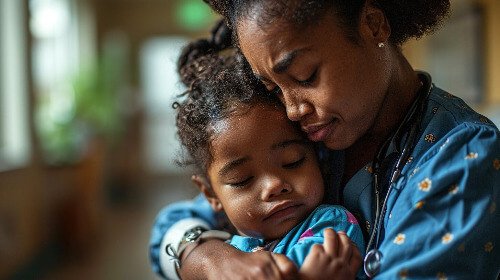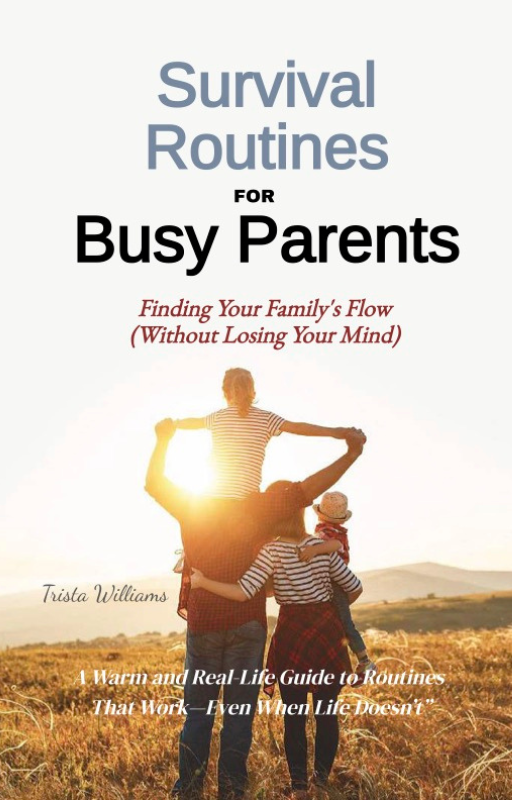Understanding Separation Anxiety in Children
One of those challenges that often tugs at a parent's heartstrings is separation anxiety in children. This phase can be difficult for both you and your child, but once you understand it better you can help ease the transition.

What is Separation Anxiety?
Separation anxiety is a normal part of childhood development. It typically occurs when a child becomes distressed due to being separated from their primary caregiver.
You might notice your child clinging to you, crying, or showing reluctance when it’s time to part. While it’s hard to see your child upset, it’s important to remember that this phase is normal and usually temporary.
Why Does Separation Anxiety Happen?
Separation anxiety often develops as children begin to understand the concept of object permanence—the idea that people and objects continue to exist even when out of sight.
Before this developmental milestone, children might not be aware that when you leave, you’ll come back.
Another factor can be a child's temperament. Some children are naturally more anxious or sensitive, making them more prone to separation anxiety.
Life changes such as moving to a new home, a new sibling, overprotective parenting styles or family stress can also trigger or intensify these feelings.
Remember, every child is unique, and what triggers anxiety in one might not affect another
Signs of Separation Anxiety in Children
How can you tell if your child is experiencing separation anxiety?

Here are some common signs:
- Crying or tantrums when you leave.
- Clinging behavior, not wanting to let go of you.
- Nightmares about being separated from you or trouble sleeping alone.
- Physical complaints like headaches and tummyaches when nearing separation.
- Intense worry about your safety when you're apart
- Refusal to go to school or daycare.
If these behaviours sound familiar it is important that you understand that they are simply a normal part of development. You need to help your child manage what it is that they are going through with empathy.
How to Ease Separation Anxiety
Practical ways to help your child through their separation anxiety.
1. Establish a Routine
Children thrive on routine. Having a predictable schedule can make separations feel less daunting.
For instance, create a consistent goodbye ritual—a special hug, a wave at the window, or a fun phrase you say each time.
2. Practice Short Separations
Start with short separations to help your child get used to being away from you. Slowly increase their time apart from you as they become more comfortable.
This can be as simple as leaving them with a trusted friend or family member for a short period.

3. Stay Calm and Confident
Children often pick up on their parents' emotions.
If you appear anxious or guilty, your child might feel more worried.
Stay calm and confident, offering reassurance without overemphasizing the separation.
4. Talk About It
Open communication is key. Talk to your child about what’s happening and what to expect.
Use simple, clear language to explain where you’re going and when you’ll be back.
5. Create a Comfort Object
Having an object that they are familiar with can provide a sense of security.
A favorite toy, blanket, or even a small token from you can help comfort your child when you’re not there.
6. Prepare for Transitions
Give your child a heads-up before a separation. Sudden departures can heighten anxiety, so try to prepare them in advance.
A few minutes’
notice can help them adjust mentally to the upcoming separation.
Remember, patience is key. There will be days that are easier than others, and that's okay!
When Should We Worry and Seek Help?
While separation anxiety in children is a normal part of development, there are times when it may require additional support.
If your child’s anxiety persists beyond their early years, or if it severely impacts their daily life, it might be time to consult a professional.
Signs that professional help may be needed include:
- Intense fear that lasts beyond age 6.
- Physical symptoms (like vomiting) due to anxiety.
- Refusal to go to school over a long period.

- Extreme difficulty in social or daily functioning.
- Excessive distress when separated from home or family
- Always worrying about losing a parent or a loved one
- Physical symptoms like headaches or stomachaches when separation is expected
You can always reach out to your pediatrician or a mental health professional if you have any concerns.
A Final Word of Encouragement
Remember, separation anxiety is a sign of a healthy attachment between you and your child. Your child trusts you and feels secure when you are around.
While it can be really hard to see them struggling, when they are going through this you will be able to teach them independence and flexibility.
Take heart—this phase will pass, and your child will become more secure.
Meanwhile, cherish the moments together, and don’t hesitate to seek support. Having a supportive community is the best way to go.

























New! Comments
Have your say about what you just read! Leave me a comment in the box below.